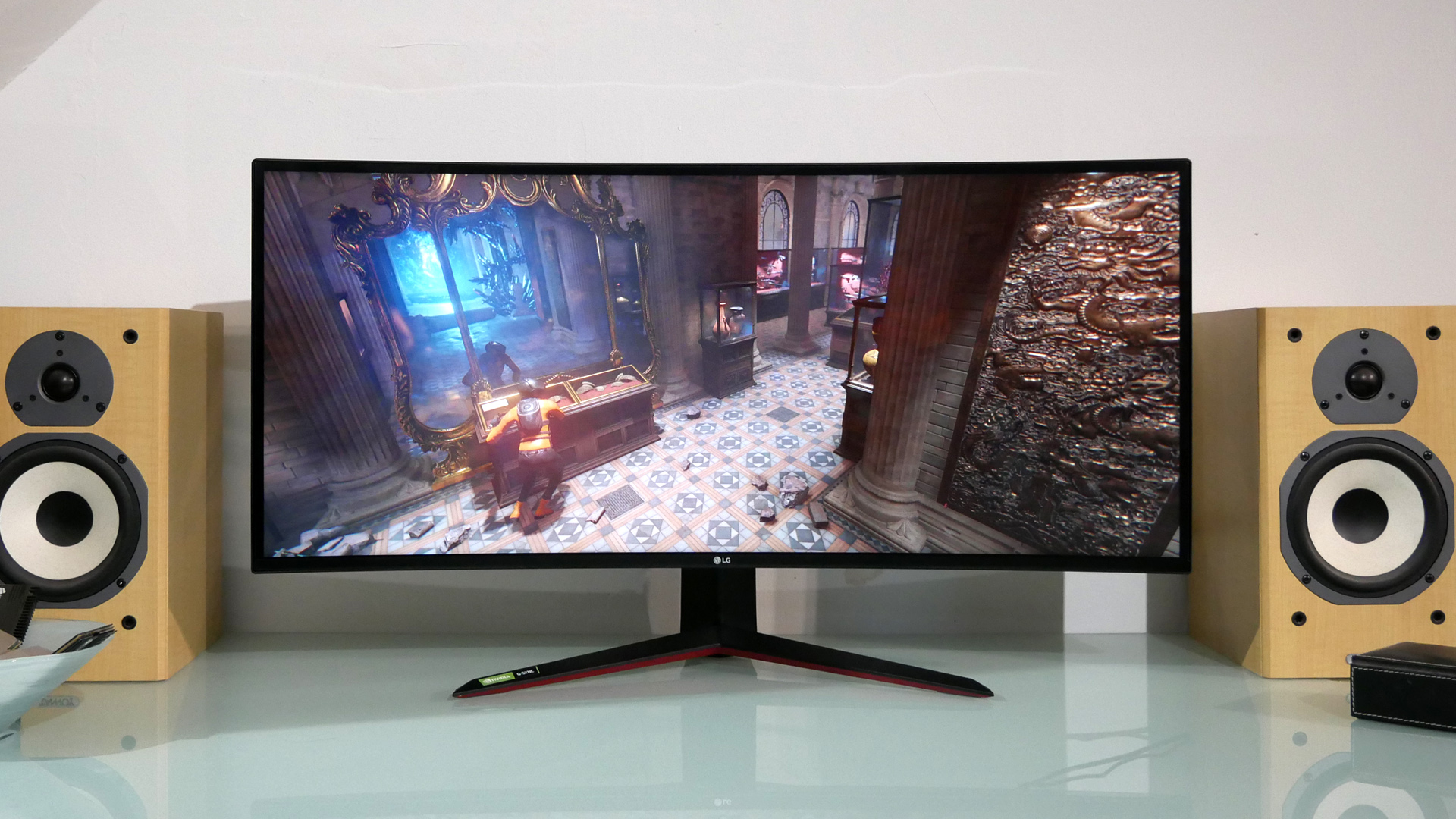Our Verdict
LG's latest ultrawide gaming panel is fast, full featured and looks gorgeous. But it's also an awful lot of money for a 34-inch monitor.
For
- Gorgeous NanoIPS panel
- Very quick for an IPS monitor
- Great all-round experience
Against
- Expensive. Very expensive
- 'Only' HDR400
- No USB-C
PC Gamer's got your back
It's remarkable how rapidly 21:9 aspect ultrawide monitors have become relatively routine, isn’t it? With 49-inch super-ultra-extra-whatever wide 32:9 aspect beasts now on the market, the new LG UltraGear 34GN850 34-inch 21:9 effort almost has the makings of a mainstream monitor these days.
Panel size - 34-inch
Panel type - NanoIPS
Native resolution - 3,440 x 1,440
Brightness - 400cd/m2
Contrast - 1,000:1
Response - 1ms
Colour space - 98% of DCI-P3
HDR support - VESA DisplayHDR400
Inputs - DisplayPort, 2x HDMI, USB 3.1 hub
Other - Nvidia G-SYNC Compatible, AMD FreeSync Premium
Almost, but not quite. Because this panel is positively packed with the latest features, and it all starts with the 34-inch curved screen. If the 3,440 by 1,440 pixels are merely on par for this type of display, the 1ms-enabling Nano IPS technology is a pretty trick.
LG is one of the few monitor makers that actually manufactures LCD panels, providing the pick of its own produce. In this case, LG reckons Nano IPS tech is comparable to TN for raw speed. That’s important, because the 34GN850 is good for fully 160Hz, a refresh rate that would be redundant in the context of an old-school IPS panel that simply couldn't keep up in terms of response.
Next up is HDR support. Granted, it’s only VESA DisplayHDR400, and thus the very lowest rung of HDR certification. So, there’s no local dimming and the peak brightness tops out at 400 nits. But even the lowliest HDR panels tend to be a bit more punchy than an SDR panel. The ability to correctly process an HDR video stream or render an HDR game is at least handy, too.
The 34GN850 also includes both Nvidia G-Sync and AMD FreeSync Premium support. Note the G-Sync support is G-Sync Compatible Verified rather than full fat G-Sync, so it lacks Nvidia’s processing chipset itself. But overall, this makes for a comprehensive and conspicuously gaming-centric feature set.
If you’re looking for omissions, the only really obvious absence is USB Type-C connectivity. That means you can’t hook up a laptop to drive the display, charge, and connect peripherals with a single cable. Given the gaming centric remit, the assumption may be that most buyers will be running desktops. That’s probably true. What’s more, a really powerful gaming portable will need more charging juice than a typical USB-C interface will provide.
And yet USB-C is such a nice feature to have, it’s hard to entirely overlook its omission.
Those details aside, the design aesthetic of the LG 34GN850 strikes a good balance between letting you know it means business in games and not coming over too, well, business like. There’s glossy black plastic and some discreet red accents, but nothing overly adolescent. We like. Oh, and for the record the stand offers height and tilt adjustment and there’s a two-port USB 3.1 hub.
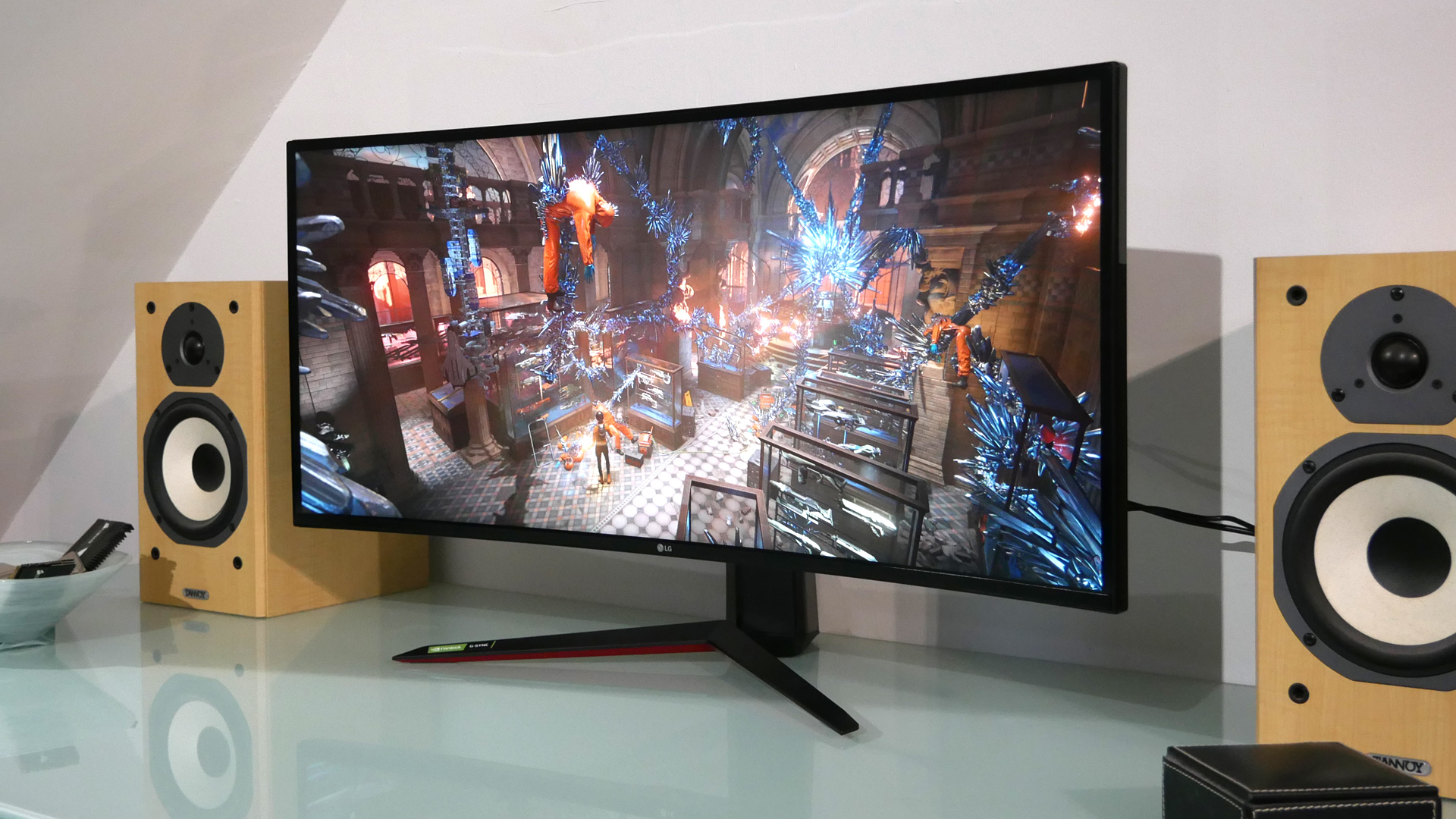
Speaking of things we like, how about the LG 34GN850’s immediate unboxed image quality. The Nano IPS panel is only rated at 1,000:1 for static contrast. That could imply a washed out image and maybe even IPS glow, which are problems some LG IPS monitors do exhibit. But not here. This 34-incher is rich, vibrant, saturated, punchy, and contrasty.
All the good stuff in terms of the core image quality, then.
It’s not quite perfect, of course. There’s a noticeable glow or halo around bright objects set in dark backgrounds, for instance. And while HDR content does look great, this display simply doesn’t have the shocking visual impact of a true HDR panel with local dimming and much higher brightness.
The other arguable issue is pixel response. To be clear, by IPS standards it’s excellent. About as good as it gets. However, there is some noticeable inverse ghosting with the pixel overdrive set to its highest level. It's not a major problem, since LG offers three levels of overdrive and the middle setting suffers from little to no ghosting while delivering great response.
Is it quite as good as the very quickest TN monitors? No. The reality remains, when it comes to LCD technology, that you can’t quite have it all with any given monitor. If you want the very fastest response, you’ll have to put up with the relatively poor contrast, colours and viewing angles of TN.
Us? We’d take this IPS screen with it’s luscious colours and impeccable viewing angles any day.
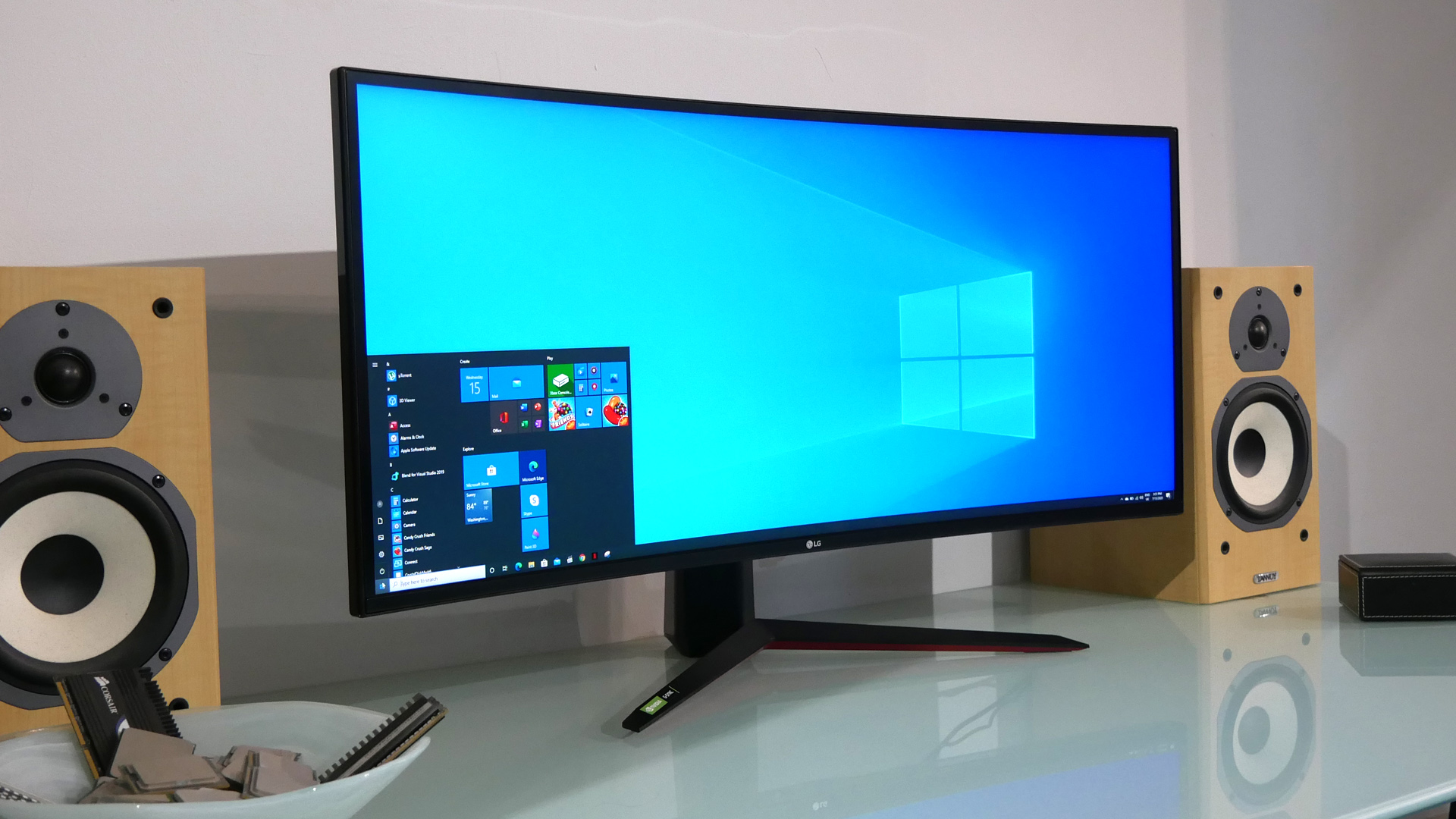
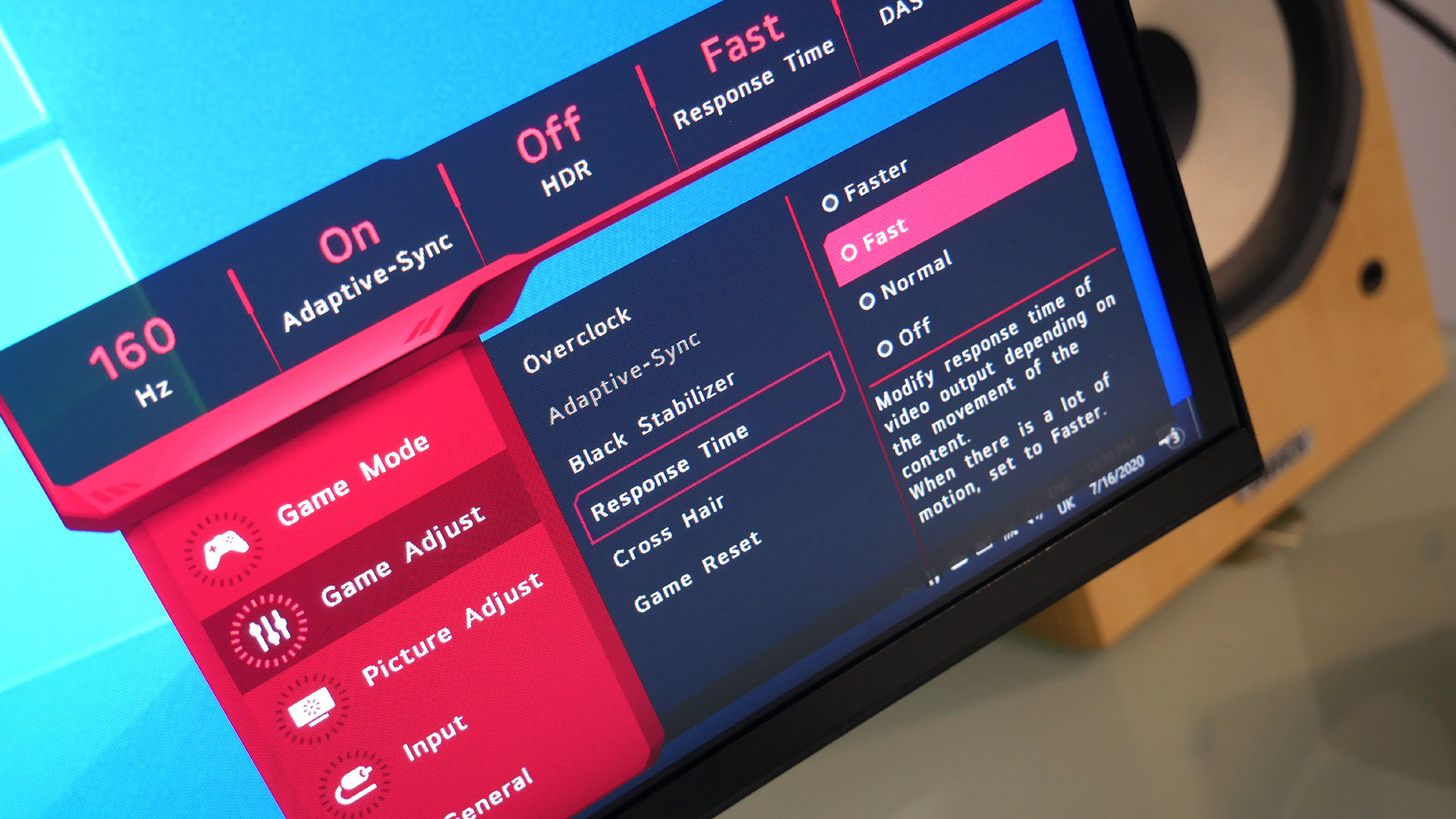

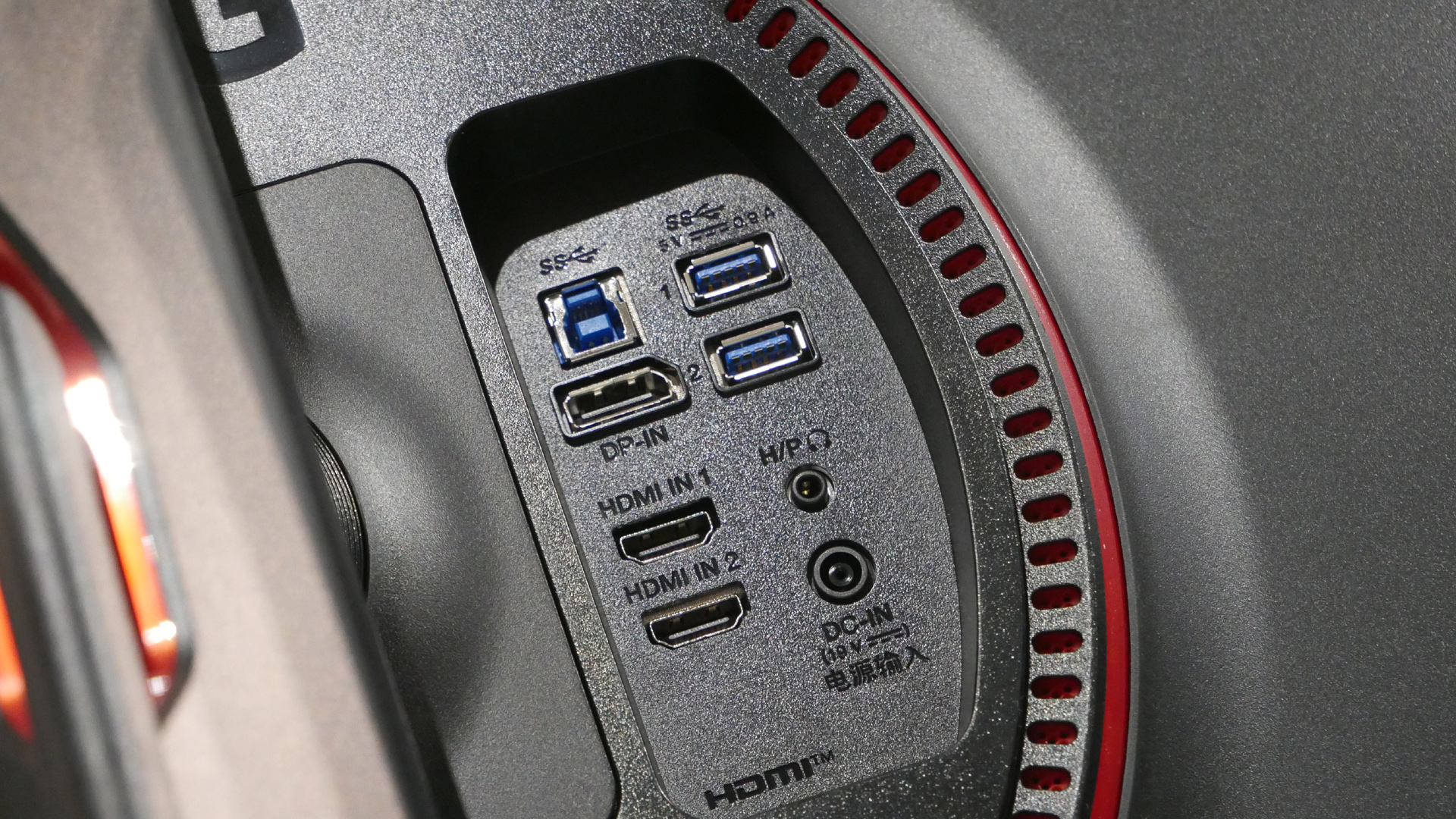


Best gaming monitor: pixel-perfect panels for your PC
Best 4K monitor for gaming: when only high-res will do
Best 4K TV for gaming: big-screen 4K PC gaming
While we’re on the subject of speed, the LG 34GN850’s mere 160Hz refresh would have seemed spectacular a few years ago. But with 240Hz screens well established, and 360Hz on the near horizon, is 160Hz still a big draw? Once you get beyond 120Hz, refresh rates are usually a case of diminishing returns. If you are an esports fanatic with a CS:GO reputation to maintain, OK, you’ll want something faster. For everyone else, this monitor knocks out buttery smooth frame rates.
Provided, of course, you have the GPU to drive it. The 3,440 by 1,440 spec isn’t a huge native resolution by today’s standards. But driving it at 160Hz in the latest and greatest titles is no mean feat. But if you've got the hardware, you’re in for a treat. Old school adventures, such as The Witcher 3, look absolutely luscious on this panel. It’s also big enough and detailed enough for a great experience in more strategy orientated stuff like the Total War series. Likewise, aforementioned semi-pro esports types aside, this is a damn fine screen for CS:Go or battle royale larks.
Of course, it had better be for what is essentially a $1,000 or £1,000 screen. Which is where our main reservation enters the narrative. This is a fantastic all-round screen for gaming, for video, even for productivity particularly if you can get a hold of an LG promo code. But is it a $1,000 experience? With high refresh 4K monitors available for less, albeit only at 27 inches, that’s a tough call. Certainly at this price, it feels like a higher HDR rating with local dimming capability plus USB-C ought to be in the mix, then it might feel like a true premium display.
LG's latest ultrawide gaming panel is fast, full featured and looks gorgeous. But it's also an awful lot of money for a 34-inch monitor.

Jeremy has been writing about technology and PCs since the 90nm Netburst era (Google it!) and enjoys nothing more than a serious dissertation on the finer points of monitor input lag and overshoot followed by a forensic examination of advanced lithography. Or maybe he just likes machines that go “ping!” He also has a thing for tennis and cars.
